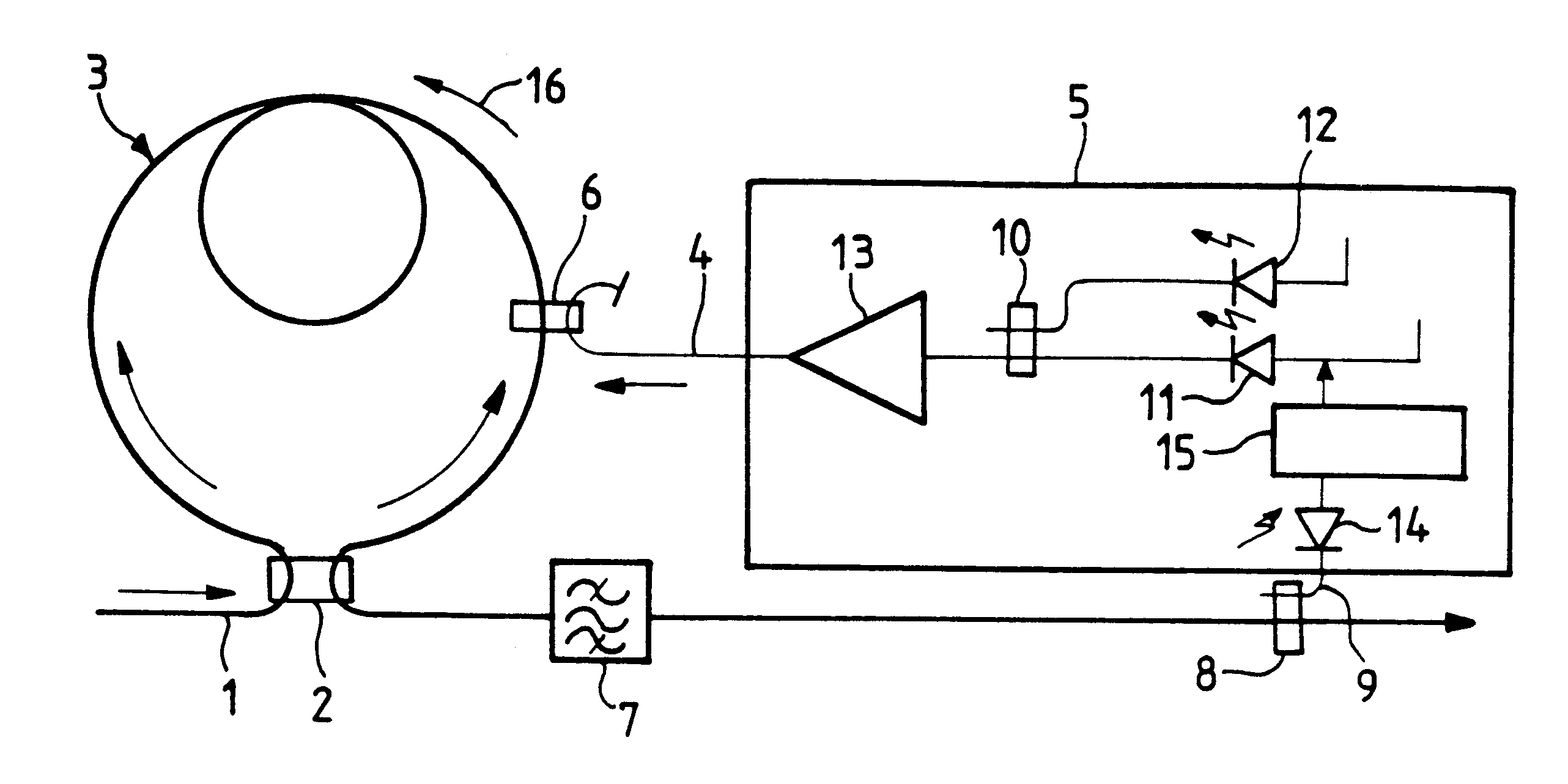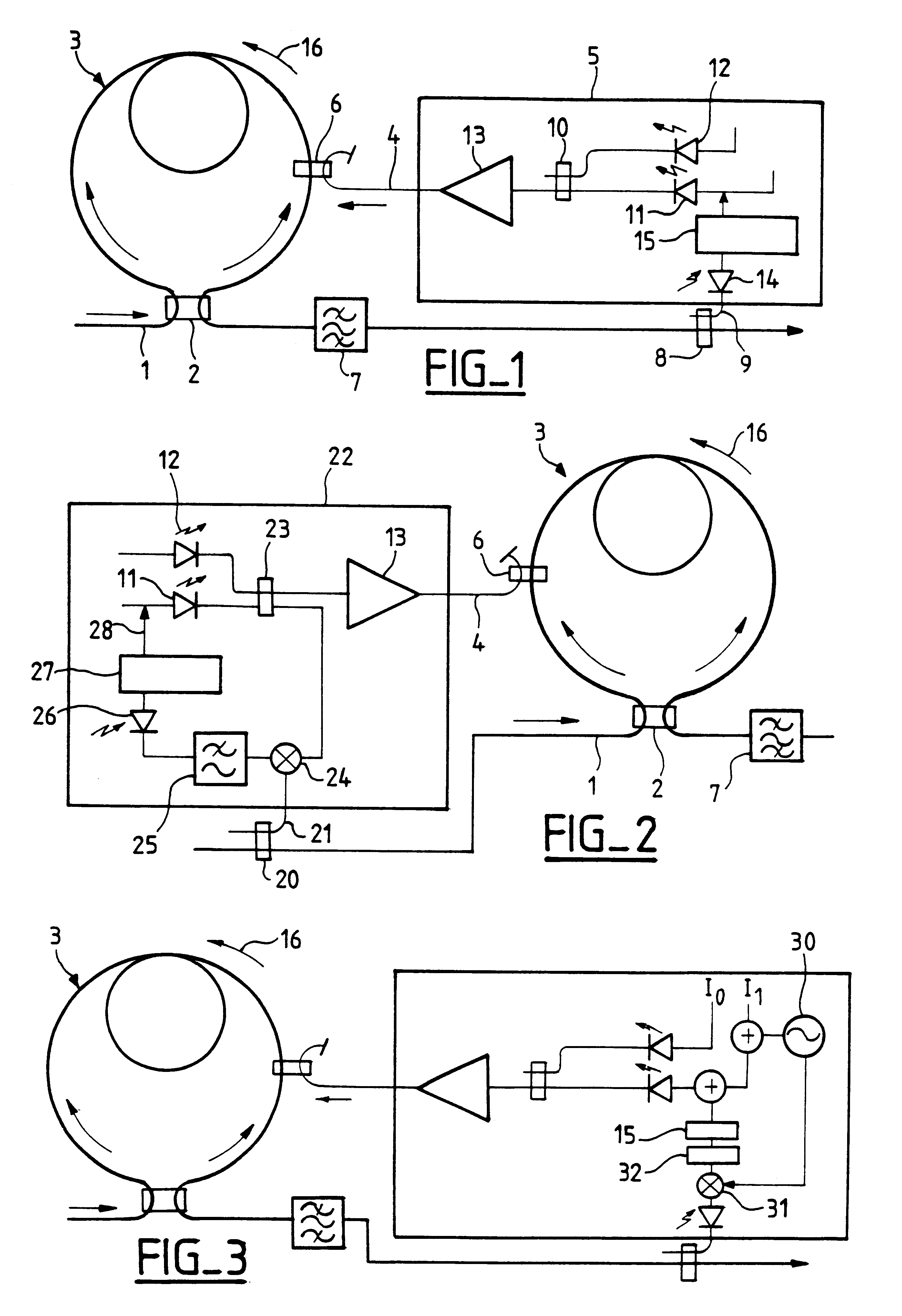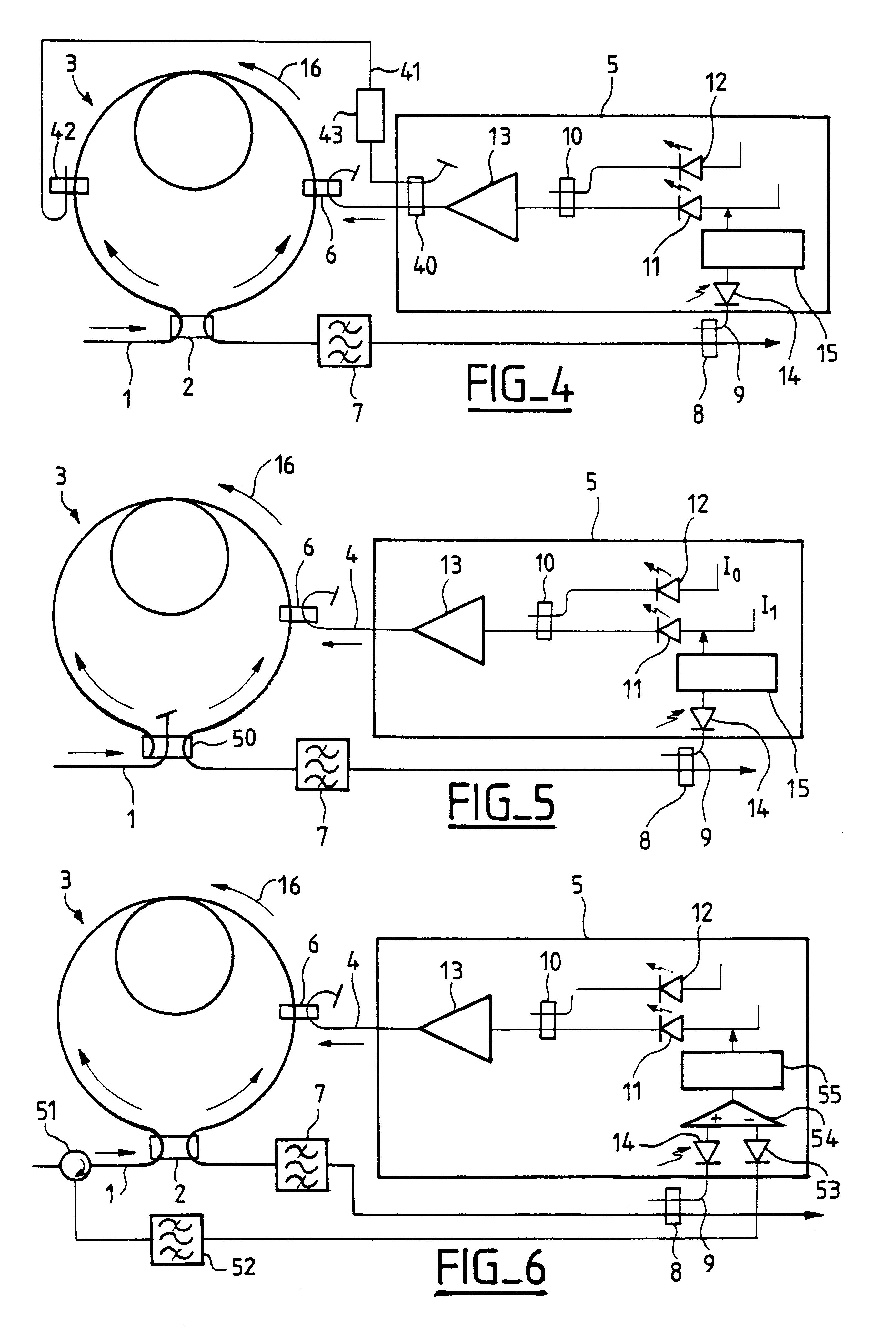Very high data rate soliton regenerator
a soliton regeneration and data rate technology, applied in the field of very high data rate soliton regeneration, can solve the problems of limiting the maximum frequency to about 40 gbit/s, increasing the cost of devices, and putting a theoretical limit on the quality or the rate at which soliton transmission can take pla
- Summary
- Abstract
- Description
- Claims
- Application Information
AI Technical Summary
Benefits of technology
Problems solved by technology
Method used
Image
Examples
second embodiment
FIG. 2 is a block diagram of the invention in which the frequency of one of the laser sources is servo-controlled by means of an optical phase-lock loop (OPLL). Instead of the elements 8, 9, and 5 of FIG. 1, the device of FIG. 2 has the following elements. Downstream from the NOLM, a coupler 20 couples the fiber 1 to a length of fiber 21. The signal from the fiber 21, taken from the soliton signal that is to be modulated, is applied to a signal regenerator device 22. Like the device 5 in FIG. 5, this device comprises two laser sources 11 and 12 similar to the sources in FIG. 1. The second source 11 is servo-controlled, e.g. by means of its power supply current. Its outlet optical signal has a frequency that differs by f.sub.0 / 2 relative to the signal from the source 12. The outlet signals from the sources 11 and 12 are delivered to a two-inlet optical combiner 23. As in FIG. 1, one of the outlets from the combiner 23 is applied to an amplifier 13. The outlet from the amplifier 13 i...
third embodiment
FIG. 3 is a block diagram of a regenerator of the invention. Compared with the circuit of FIG. 1, the FIG. 3 circuit has the following differences. A source 30 at a frequency f that is small compared with the bit frequency f.sub.0 is added into the current I.sub.1. Also, between the low frequency detector 14 and the control electronics 15, there is inserted a mixer 31 and a lowpass filter 32. The mixer also receives a signal from the source 30.
The FIG. 3 regenerator operates in a manner substantially analogous to the FIG. 1 regenerator. However, the optical signal emitted by the laser source 11 also has a component at the frequency f. Providing the frequency f is very small compared with the bit frequency f.sub.0 of the solitons, that is not troublesome. The mixer 31 mixes the low frequency signal delivered by the detector 14 with the signal at frequency f. The filter 32 eliminates noise from the signal supplied by the mixer, thereby improving the quality of the error signal applied...
fourth embodiment
FIG. 4 is a block diagram of a regenerator of the invention. Compared with the FIG. 1 regenerator, the regenerator of FIG. 4 has the following differences: downstream from the amplifier 13 there is disposed a coupler 40 having a 50 / 50 coupling ratio, coupling a control signal into a fiber 41, which control signal is constituted by half of the outlet signal from the amplifier. The control signal coupled into the fiber 41 is coupled into the NOLM by means of a coupler 42 which is symmetrical to the coupler 6, and it propagates in the opposite direction to the control signal which is coupled into the NOLM via the coupler 6. In addition, means are provided for ensuring that the two control signals coupled into the NOLM by the couplers 6 and 42 are in phase opposition: for this purpose, it is possible to provide an appropriate difference in fiber length between the couplers 40 and 6 and between the couplers 40 and 42. It is also possible to provide an optical delay line 43 in the fiber b...
PUM
| Property | Measurement | Unit |
|---|---|---|
| length | aaaaa | aaaaa |
| width | aaaaa | aaaaa |
| latency time | aaaaa | aaaaa |
Abstract
Description
Claims
Application Information
 Login to View More
Login to View More - R&D
- Intellectual Property
- Life Sciences
- Materials
- Tech Scout
- Unparalleled Data Quality
- Higher Quality Content
- 60% Fewer Hallucinations
Browse by: Latest US Patents, China's latest patents, Technical Efficacy Thesaurus, Application Domain, Technology Topic, Popular Technical Reports.
© 2025 PatSnap. All rights reserved.Legal|Privacy policy|Modern Slavery Act Transparency Statement|Sitemap|About US| Contact US: help@patsnap.com



